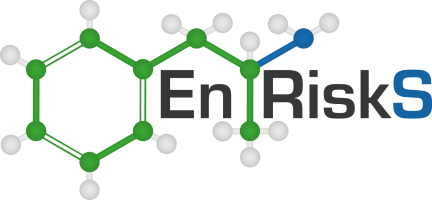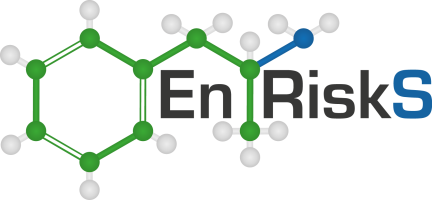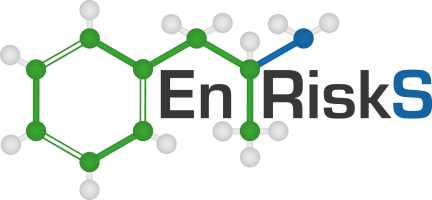

17 July 2013
Environmental Risk Sciences Pty Ltd
PO Box 2537
Carlingford Court NSW 2118
Phone: +61 2 9614 0297
Ministry of Health
Fax: +61 2 8215 0657
PO Box 5013
Email
: [email address]
Wellington 6140
New Zealand
www.enrisks.com
Attention:
Paul Prendergast
Review Comments: Dr Nick Kim Paper
Jackie Wright, Principal/Director of Environmental Risk Sciences Pty Ltd (enRiskS) and Adjunct Lecturer with
Flinders University has reviewed the following document:
Nick Kim 2016, Background notes relating to the nature and health significance and persistence of
trace of methamphetamine on indoor surfaces, document from Massey University dated 17 June
2016.
This letter provides review comments in relation to this document. My CV is attached to this review letter.
General comments:
The document provides an opinion only and does not present any new information that was not available at
the time the current New Zealand Guidelines were published. No new data or studies have been included in
the paper and as such the paper does not add to the information available at the time the New Zealand
guidelines were derived. The paper has not been peer-reviewed and provides no declaration of whether the
opinion was commissioned and funded by a third party.
In the development of any guideline it is healthy to consider a range of different opinions, however it is
important that these are balanced and based on the most current data and information. In addition, when
considering the revision of any standard or guideline it is important to ask if any new data has changed that
would support the change of a guideline. There is nothing in the document presented by Dr Kim that
supports such a change. The paper is simply an opinion that has chosen to use a less conservative reference
dose and has not presented any new data or information to inform discussions.
Specific comments:
Section 2.2.2 How risk-based guidelines are developed and what they represent
This section provides a very basic and simplistic overview of how health based guidelines are derived. This
section implies that the process always results in guidelines that that guarantee no effects and have a large
level of “safety”, such that exceeding the guideline by a marginal amount (which is not defined) cannot imply
the onset of a “measureable health risk”. When developing investigation levels based on the protection of
health, this is the intent, however where data is lacking this is not always the case. This may or may not be
the case for the derivation of guidelines for methamphetamine.
Section 2.2.3 Origins of the New Zealand’s recommended guideline
This section makes reference to the Australian guideline. Dr Kim has not made any effort to contact the
author of the guideline (myself) to determine if the report was released as a final (which it was) and if it was
1 | P a g e


peer reviewed (which it was by Australian state and national health authorities). As a result, this section is
written to imply that these guidelines are draft and not peer-reviewed which is incorrect. In addition, Dr Kim
has not discussed why there are differences in the Australian guidelines compared with the Californian
guidelines.
Section 2.2.4 A secondary rationale for use of a low number
This section references an opinion presented earlier in the paper that the “
majority of potential health risks
associated with buildings used as clandestine laboratories are linked to inhalation risks of the higher-volume
and toxic chemicals that are used in the manufacturing process, in particular, various solvents; but also
other potential by-products of the methamphetamine manufacturing process that may exist on walls
and other surfaces”. There is no doubt that data is available to support this statement, but that does not
exclude other health effects related to lower levels of exposure from residues that remain in
clandestine drug laboratories or from smoking. It is just that less is known and published on this matter.
No information is provided in relation to environmental exposures.
My research has shown health effects from exposures to lower levels of environmental contamination.
This data is currently being released through publication and thesis. By not recognizing or discussing the
lack of published data on health effects associated with lower level environmental exposures does not
support the conclusion that these exposures are not associated with harm and are not important. As
such this short discussion has selectively only presented information related to high levels of exposure.
Section 2.3.2 Potential relevance of external constraints including background prevalence
This section references other guidelines for arsenic in water and cadmium in food. Both of these have a
significant database of information relevant to understanding exposures and dose-response. The inclusion of
these guidelines does not add to the argument being presented.
The presence of background intakes in the development of guidelines is relevant, however for
methamphetamine the background level is not known and if it were known then the allowable portion from
a contaminated property should be lower, not higher. The total intake from all sources, background and
contamination, would need to be equal to or lower than the acceptable dose. By incorporating background
intakes of methamphetamine an investigation or remediation guideline should then be lower than the
current guideline.
Section 3.2 General Approach and Section 3.3 Derivation of the health-based reference value
This section relies only on paper published by Hannon and Griffin (Hammon & Griffin 2007) with no other
more recent reviews or studies considered.
Dr Kim has adopted the lower reference dose derived in this paper for further discussion. No critical review
of this value or how it relates to the lower RfD derived by the OEHHA (Salocks, C, Golub & Kaufman 2009) is
provided. The studies considered in the paper by Hammon & Griffin were also considered in the OEHHA
review which was subject to a more rigorous assessment and review process. The difference in reference
doses from these two sources in a factor of approximately 16. Dr Kim suggests a higher difference of 25 for
infant exposures (likely due to adopting exposure calculations from Hammon & Griffin rather than those
used to develop specific guidelines).
This approach is essentially cherry picking criteria to suit an opinion, not providing a robust reasoning as to
the suitability and relevance of such criteria for establishing suitable public health risk based guidelines.
Section 3.4.2 A hidden precautionary factor
This section implies there are hidden precautionary factors in the exposure modelling. As with all exposure
modelling assumptions are required to characterize exposures. The information presented by Dr Kim has not
considered published research that is now available to better characterize issues such as surface residue
2 | P a g e



transfers and dermal absorption of methamphetamine (Salocks, CB et al. 2014; Salocks, CB et al. 2012; Van
Dyke, Martyny & Serrano 2014). Rather Dr Kim assumes that the older information is based on assumptions
that must be conservative. This is not the case. Dr Kim assumes contamination is depleted over time from
surfaces and materials. No data is presented to support these statements. In addition, the derivation of the
reference dose already assumes a sub-chronic exposure for this reason.
Section 3.4.3 Comparison to doses used for treatment of ADHD in children
This section discusses the studies available on the use of ADHD medications in children and relates potential
environmental doses to these intakes. Doses prescribed in any medication already relate to a dose where
there is an effect (a therapeutic effect). This bears little to no relation to the health effects these doses may
have on individuals who do not need these drugs, or sensitive individuals. Such a direct comparison is not
appropriate when addressing public health issues.
Section 3.4.4 Use of the words “contamination” and “contaminated”
In this section Dr Kim has stated that properties with levels of methamphetamine contamination less than 12
µg/100cm2 should not be considered contaminated. This is based on multiplying the current guideline of 0.5
µg/100cm2 by 25. This is inappropriate as it is based on the simple use of a different toxicity reference value
(and exposure assumptions) that suit the discussion presented. I cannot support such a criterion.
I have conducted research specifically addressing health effects and levels of exposure in individuals exposed
to methamphetamine residues in former clandestine drug laboratories and homes with contamination from
smoking. This work has identified exposures that are higher than estimated in the modelling, and health
effects in individuals exposed to surface contamination levels in the range (average in homes) of 5.8 to 18.6
µg/100cm2.
Please contact Jackie on (02) 9614 0297 or S 9(2)(a)
if you require any additional information in relation
to the above.
Yours sincerely,
Jackie Wright (Fellow ACTRA)
Principal/Director
Environmental Risk Sciences Pty Ltd
Adjunct Lecturer
Public Health
School of the Environment
Flinders University
3 | P a g e

 References
References
Hammon, TL & Griffin, S 2007, 'Support for selection of a methamphetamine cleanup standard in Colorado',
Regulatory toxicology and pharmacology : RTP, vol
. 48, no. 1, Jun, pp. 102-114.
Salocks, C, Golub, MS & Kaufman, FL 2009,
Development of a Reference Dose (RfD) for Methamphetamine,
Office of Environmental Health Hazard Assessment, Integrated Risk Assessment Branch.
Salocks, CB, Hui, X, Lamel, S, Qiao, P, Sanborn, JR & Maibach, HI 2012, 'Dermal exposure to
methamphetamine hydrochloride contaminated residential surfaces: surface pH values, volatility, and in
vitro human skin',
Food Chem Toxicol, vol
. 50, no. 12, Dec, pp. 4436-4440.
Salocks, CB, Hui, X, Lamel, S, Hafeez, F, Qiao, P, Sanborn, JR & Maibach, HI 2014, 'Dermal exposure to
methamphetamine hydrochloride contaminated residential surfaces II. Skin surface contact and dermal
transfer relationship',
Food Chem Toxicol, vol
. 66, Apr, pp. 1-6.
Van Dyke, M, Martyny, JW & Serrano, KA 2014, 'Methamphetamine residue dermal transfer efficiencies from
household surfaces',
Journal of occupational and environmental hygiene, vol
. 11, no. 4, pp. 249-258.
4 | P a g e








